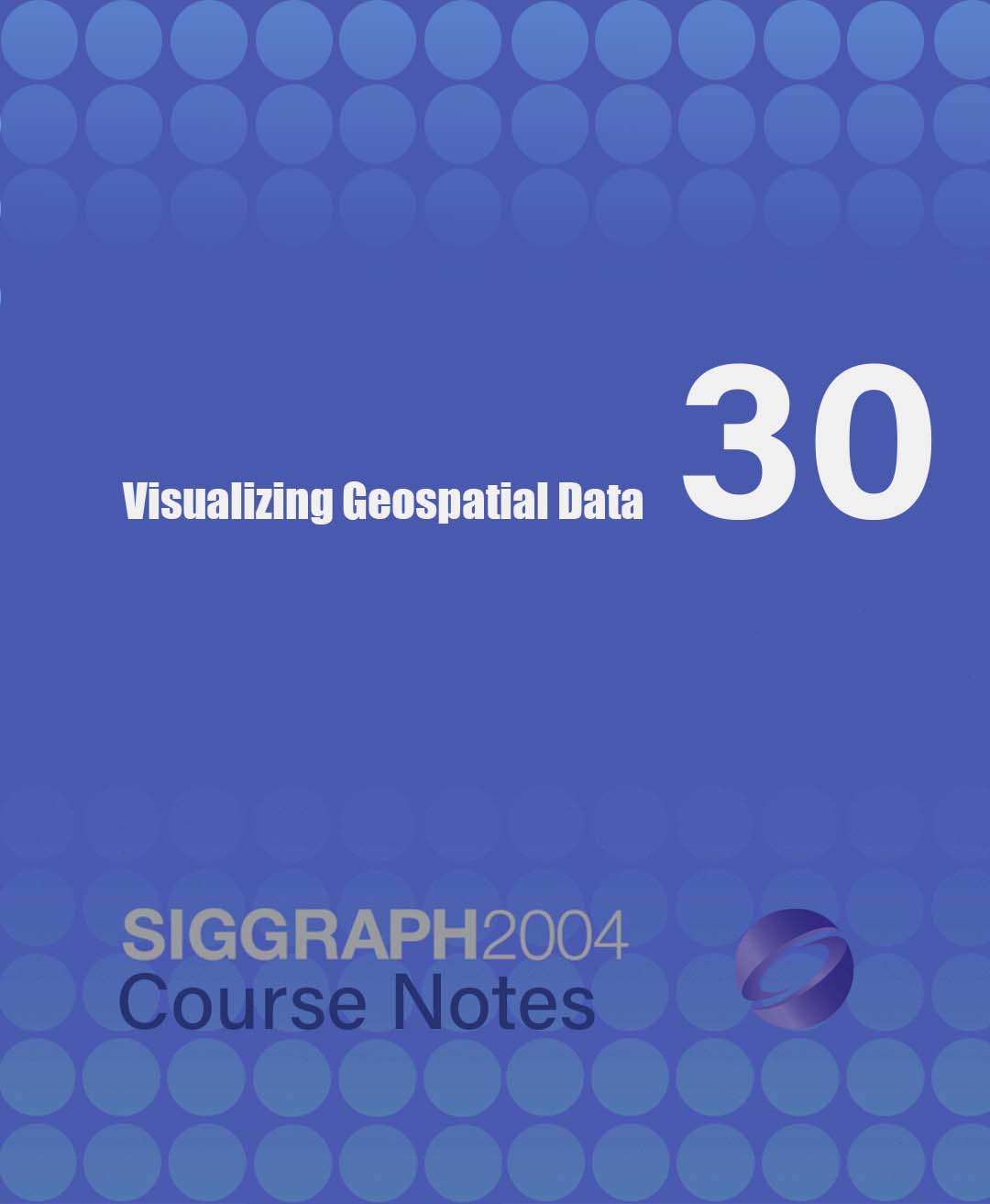“Visualizing Geospatial Data” by MacEachren and Rhyne
Conference:
Type(s):
Entry Number: 30
Title:
- Visualizing Geospatial Data
Course Organizer(s):
Presenter(s)/Author(s):
Abstract:
- Rudimentary: minimal data sharing between the GIS and Vis systems.
- Operational: consistency of geospatial data.
- Functional: transparent communication between the GIS and Vis systems.
- Merged: one comprehensive toolkit environment.
Prerequisites
Experience in working with geospatial data is helpful as is familiarity with scientific and/or information visualization terminology.
Hands-On Course
Hands-on courses require special preparation and equipment: Details
Intended Audience
Scientific researchers, educators, and computer graphics specialists interested in exploring particular issues associated with handling the visual display of cartographic, geospatial, and geoinformatics data.
Description
This course is divided into two components:
1. Overview of integrating geospatial data with visualization methods. This component focuses on four levels of integrating geospatial data and geographic information systems (GIS) with scientific and information visualization (VIS) methods:
The course provides examples of the four levels of integration. It also introduces how visual exploration of geospatial and geoinformatics data encompasses methods from both the scientific visualization and information visualization subfields. It then shows examples of GeoVRML applications developed for landscape and resource planning, visibility studies, and decision making at North Carolina State University.
2. New directions in distributed geovisualization. The second component focuses on distributed geovisualization, including distribution of visualization operations among components and physical locations, and distribution of interaction with the visual tools among users. The course reviews development of highly interactive geovisualization tools that allow investigators, located at remote sites, to collaborate via the internet; building user interfaces that support same- and different-place real-time decision making and crisis management using vast geospatial data resources. It highlights appropriate visual-display techniques and data-mining methods of geospatial data across heterogenous platforms that encompass high-end servers, desktop computers, laptops, personal digital assistants, cell phones, and other devices. It then demonstrates GeoVISTA Studio, a Java, component-based, open software environment developed at Pennsylvania State University and distributed through SorceForge.




